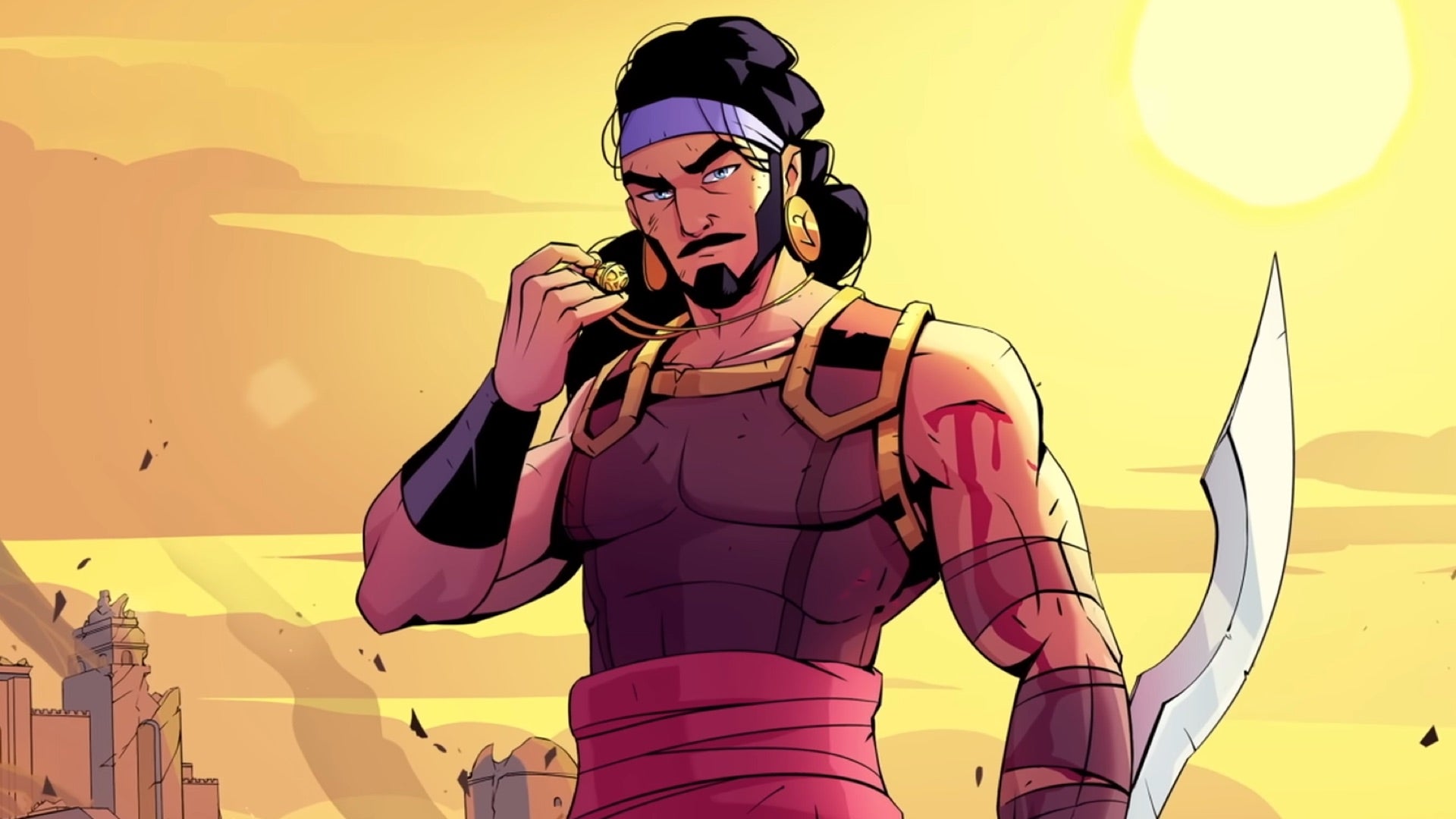Our pal the Prince of Persia has been through a lot since his seminal debut in 1989, his form ever-shifting like, well, the sands of time. But throughout it all, from his eye-popping rotoscoped origins to his leap into the third dimension, and then, over the last few years, back into the side-on world again, there’s one thing that’s consistently defined the series’ core: movement. Sure, old Prince was positively plodding compared to his later incarnations, but a sense of unparalleled fluidity has stayed true. I say all this, because The Rogue Prince of Persia, which has just had its 1.0 release on PC, Xbox, PlayStation, PlayStation Plus, and Game Pass after a year in Steam early access, still manages to feel like part of the series’ nearly four-decade legacy, despite yet another reimagining of its form.
It’s admittedly still early days for me as far as The Rogue Prince of Persia goes, and I’ve only had a couple of hours with it right now – but already I’m impressed with how chef’s kiss its movement feels. Before we get too deep into that, though, it’s worth taking a step back. The Rogue Prince of Persia, if you didn’t already know, comes from Evil Empire, the studio responsible for the acclaimed Dead Cells’ long tail of post-launch support before original developer Motion Twin pulled the plug. And there’s unquestionably a lot of the old in Evil Empire’s new.
The Rogue Prince of Persia might swap Dead Cell’s dark, dank fantasy aesthetic for the shimmering domes and arid vistas of the Perisian city Ctesiphon – here, you’re attempting to overthrow Nogai the Hun and his invading army – but at its core, it’s still a combat-heavy side-scroller featuring labyrinthine procedurally assembled levels, persistent power-ups, temporary per-run weapons and buffs, and, yes, a roguelike structure. You fight, you die, you go again, slowly gaining news skills and upgrades in the hope that next time, this time, will be the one. It’s certainly not a carbon copy, but it’s familiar enough – right down to specifics like its fast-travel interface – that it’s been hard to shake the feeling that, as a Dead Cells fan, I’ve already danced this particular dance a few too many times before.
Exactly how much that matters, though, I’m not yet entirely sure. And mainly that’s down to movement. As is befitting of the series’ legacy, The Rogue Prince of Persia feels fantastic from the off, with a sense of fluidity to the Prince’s parkour-inspired moveset that’s bordering on the sublime. He’s a nimble one; slickly switching from leaps to lunges to wall runs to pole jumps with fleet-footed abandon, and all with the press of a couple of intuitively arranged buttons. And it’s fast. There’s a rhythm to the traversal-skewed action, as you sprint, drop, squat, pounce, slash, and vault over enemies, that – after a bit of initial adjustment – is enormously rewarding. And shrewedly, actually rewarding, given that perfectly timed acrobatics further increase your nimbleness across the world.
